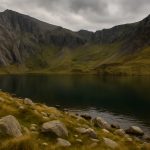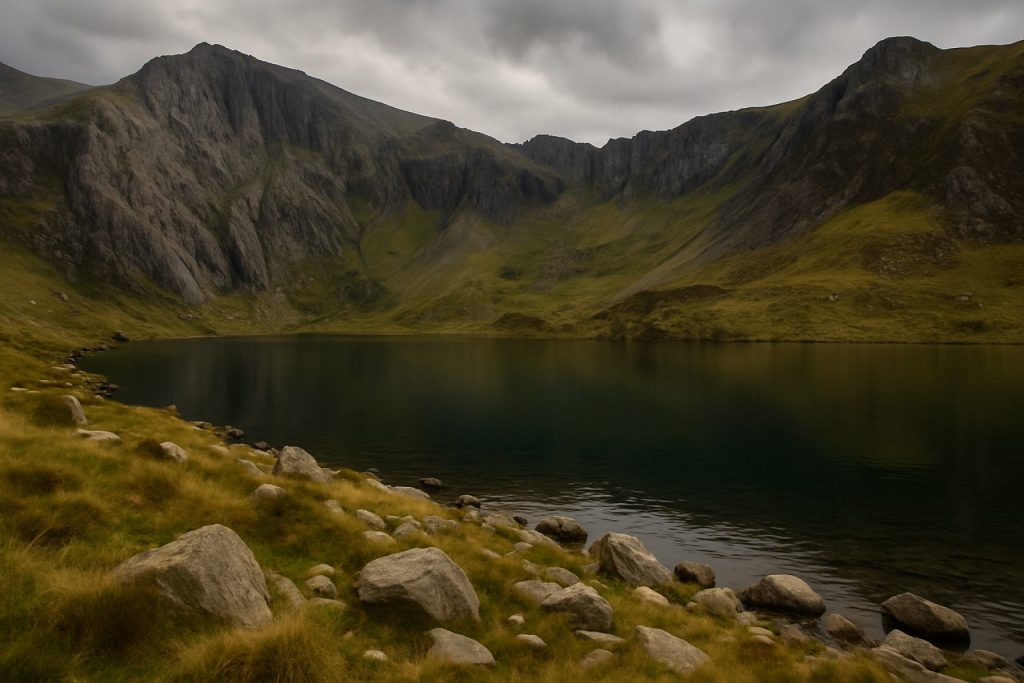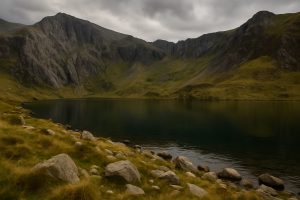Discover the Untamed Beauty and Geological Wonders of Cwm Idwal—Snowdonia’s Iconic Glacial Valley. Explore Its Rugged Landscapes, Rare Wildlife, and Fascinating History.
- Introduction: The Allure of Cwm Idwal
- Geological Origins: How the Valley Was Shaped by Ice
- Unique Flora and Fauna: A Haven for Rare Species
- Legends and Folklore: Myths Surrounding Cwm Idwal
- Hiking and Outdoor Adventures: Trails and Activities
- Conservation Efforts: Protecting a Natural Treasure
- Visitor Information: Planning Your Trip to Cwm Idwal
- Sources & References
Introduction: The Allure of Cwm Idwal
Cwm Idwal, nestled within the dramatic landscape of Snowdonia National Park in North Wales, is one of the United Kingdom’s most celebrated glacial valleys. Carved by ancient glaciers during the last Ice Age, this natural amphitheatre is renowned for its striking geological features, rare flora, and breathtaking scenery. The valley is encircled by towering cliffs and crags, with the crystal-clear waters of Llyn Idwal at its heart, creating a setting that has captivated visitors, scientists, and artists for centuries. Its unique combination of rugged terrain and accessible walking paths makes it a popular destination for hikers, climbers, and nature enthusiasts alike.
Cwm Idwal’s allure extends beyond its visual beauty. The site holds significant scientific importance, having been the first National Nature Reserve in Wales, designated for its exceptional geology and biodiversity. Botanists are drawn to its rare Arctic-Alpine plants, while geologists study its textbook examples of glacial landforms. The valley’s dramatic landscape has also inspired legends and folklore, adding a layer of cultural mystique to its natural wonders. Today, Cwm Idwal stands as a testament to the power of natural forces and the enduring appeal of wild, unspoiled places. For those seeking both adventure and tranquility, it remains a gateway to the awe-inspiring heart of Snowdonia (National Trust; Natural Resources Wales).
Geological Origins: How the Valley Was Shaped by Ice
Cwm Idwal’s dramatic landscape is a direct result of glacial processes that occurred during the last Ice Age, particularly the Devensian glaciation, which peaked around 20,000 years ago. The valley is a classic example of a glacial cirque, or corrie, formed as glaciers carved into the volcanic and sedimentary rocks of Snowdonia. Over millennia, the movement of thick ice sheets gouged out the bowl-shaped hollow, steepening the surrounding cliffs and leaving behind the distinctive amphitheatre-like shape seen today. The sheer north-facing cliffs, such as those of Twll Du (the Devil’s Kitchen), and the flat valley floor are characteristic features of glacial erosion, where freeze-thaw weathering and plucking further sculpted the rock faces.
As the glacier retreated, it deposited moraines—ridges of unsorted glacial debris—at the valley’s mouth, helping to dam meltwater and form Llyn Idwal, the lake that now occupies the valley floor. The geology of Cwm Idwal is also notable for its exposure of ancient rocks, including Ordovician slates and volcanic tuffs, which provide valuable insights into both the region’s tectonic history and the erosive power of ice. Today, the valley stands as a textbook example for geologists and students, illustrating the processes of glacial erosion and deposition in a temperate mountain environment National Trust Snowdonia National Park Authority.
Unique Flora and Fauna: A Haven for Rare Species
Cwm Idwal is renowned not only for its dramatic glacial landscape but also as a sanctuary for rare and specialized flora and fauna. The valley’s unique microclimate, shaped by its steep cliffs and sheltered basin, creates conditions reminiscent of Arctic and alpine environments. This has allowed a remarkable array of plant species, some of which are relics from the last Ice Age, to thrive here. Notably, Cwm Idwal is home to the Snowdon lily (Lloydia serotina), one of the UK’s rarest plants, which finds refuge on the inaccessible ledges of the valley’s cliffs. Other botanical treasures include the tufted saxifrage (Saxifraga cespitosa) and the alpine meadow-grass (Poa alpina), both of which are seldom found elsewhere in Britain.
The valley’s diverse habitats—ranging from scree slopes and rocky outcrops to wet heaths and bogs—also support a variety of mosses, liverworts, and lichens, many of which are nationally scarce. In terms of fauna, Cwm Idwal provides nesting sites for birds such as the ring ouzel and peregrine falcon, while its waters and wetlands are home to amphibians like the palmate newt. The area’s ecological significance has led to its designation as a National Nature Reserve, ensuring ongoing protection and study of its unique biodiversity (Natural Resources Wales). Conservation efforts focus on maintaining the delicate balance of this rare ecosystem, making Cwm Idwal a vital haven for species at the edge of their natural range.
Legends and Folklore: Myths Surrounding Cwm Idwal
Cwm Idwal, with its dramatic cliffs and hauntingly beautiful lake, has long been a source of Welsh legends and folklore. The most enduring myth is that of Idwal, the son of Prince Owain Gwynedd. According to tradition, Idwal was drowned in the lake by jealous rivals, and it is said that the waters have remained cold and somber ever since, refusing to nurture any fish as a mark of mourning. This tale has given the lake its name, Llyn Idwal, and imbued the valley with a sense of melancholy and mystery. Some versions of the legend suggest that Idwal’s spirit still lingers in the mist that often shrouds the cwm, and that his cries can be heard on stormy nights.
Other stories speak of the valley as a place of supernatural power. Local folklore claims that the unique rock formations and sudden mists are the work of ancient giants or fairies, and that the cwm was once a meeting place for druids. The stark, glacial landscape has inspired poets and storytellers for centuries, reinforcing its reputation as a liminal space between the natural and the supernatural. These legends are an integral part of the cultural heritage of Snowdonia, adding a layer of enchantment to the scientific and geological significance of Cwm Idwal. For more on the myths and history of the area, see Snowdonia National Park Authority and Amgueddfa Cymru – Museum Wales.
Hiking and Outdoor Adventures: Trails and Activities
Cwm Idwal is renowned as one of Snowdonia’s premier destinations for hiking and outdoor adventures, offering a variety of trails and activities suitable for all experience levels. The most popular route is the circular walk around Llyn Idwal, a glacial lake nestled at the heart of the valley. This well-maintained path provides breathtaking views of the surrounding cliffs and peaks, including the dramatic Idwal Slabs and the imposing Glyderau range. The circuit is approximately 3 miles (5 km) and is accessible for families and casual walkers, making it an ideal introduction to the rugged beauty of Snowdonia.
For more experienced hikers, Cwm Idwal serves as a gateway to challenging ascents such as the Devil’s Kitchen (Twll Du), a steep and rocky climb that leads to the high plateau of the Glyderau. From here, adventurers can continue to summits like Glyder Fawr and Glyder Fach, enjoying panoramic vistas across the national park. The area is also popular with rock climbers, who are drawn to the historic Idwal Slabs, a site of significant importance in British climbing history.
Beyond hiking and climbing, Cwm Idwal offers opportunities for nature observation, with its unique flora and fauna, including rare Arctic-alpine plants. The valley is managed by National Trust and Natural Resources Wales, ensuring the preservation of its natural beauty and accessibility for visitors. Whether seeking a leisurely walk or a demanding mountain adventure, Cwm Idwal stands out as a must-visit location for outdoor enthusiasts in Wales.
Conservation Efforts: Protecting a Natural Treasure
Cwm Idwal, nestled within the Snowdonia National Park, is recognized as one of the United Kingdom’s most significant glacial valleys, both for its dramatic geology and its unique biodiversity. Conservation efforts in Cwm Idwal are multifaceted, aiming to preserve its rare arctic-alpine flora, sensitive habitats, and geological features. The valley is designated as a National Nature Reserve, a status that underscores its ecological importance and provides a framework for ongoing protection and management by Natural Resources Wales.
One of the primary conservation challenges in Cwm Idwal is balancing public access with habitat protection. The area attracts thousands of visitors annually, which can lead to path erosion, disturbance to wildlife, and the introduction of invasive species. To address these issues, conservationists have implemented a range of measures, including the maintenance of well-defined footpaths, educational signage, and seasonal restrictions on certain activities to protect breeding birds and fragile plant communities. Active habitat management, such as controlled grazing and removal of invasive species, helps maintain the delicate balance of native flora, including rare species like the Snowdon lily and purple saxifrage.
Research and monitoring are integral to conservation in Cwm Idwal. Ongoing scientific studies, often in partnership with academic institutions, inform adaptive management strategies and help track the impacts of climate change on the valley’s ecosystems. Public engagement initiatives, such as guided walks and volunteer programs, foster a sense of stewardship among visitors and the local community. These combined efforts ensure that Cwm Idwal remains a protected natural treasure for future generations to study and enjoy (Snowdonia National Park Authority).
Visitor Information: Planning Your Trip to Cwm Idwal
Cwm Idwal, nestled within the dramatic landscape of Snowdonia National Park, is a popular destination for walkers, climbers, and nature enthusiasts. Before visiting, it is essential to plan your trip to ensure a safe and enjoyable experience. The main access point is the National Trust Cwm Idwal Visitor Centre at Ogwen Cottage, which provides parking, toilets, and information about the area. Parking can be limited, especially during weekends and holidays, so arriving early is recommended.
The most popular route is the circular walk around Llyn Idwal, which takes approximately 1.5 to 2 hours and is suitable for most abilities, though sturdy footwear is advised due to uneven terrain. For those seeking more challenging hikes, routes up to the Glyderau peaks begin here. Weather in Snowdonia can change rapidly; always check the latest forecast and be prepared with waterproof clothing and extra layers.
Dogs are welcome but should be kept on leads to protect the sensitive habitats and grazing livestock. The area is managed for conservation, so visitors are asked to follow the Countryside Code and stick to marked paths to minimize erosion and disturbance to wildlife. For up-to-date information on access, facilities, and seasonal advice, consult the Eryri National Park Authority website. With careful planning, a visit to Cwm Idwal offers a memorable experience amid some of Wales’s most spectacular mountain scenery.
Sources & References
- National Trust
- Natural Resources Wales
- Snowdonia National Park Authority
- Amgueddfa Cymru – Museum Wales










More Stories
Flyleaf: The Unstoppable Force Behind Modern Rock’s Revival (2025)
High-Density Microfluidics 2025–2030: Accelerating Precision, Scaling Impact
Distributed Sensor Networks for Undersea Autonomy: 2025–2030 Market Surge & Tech Breakthroughs